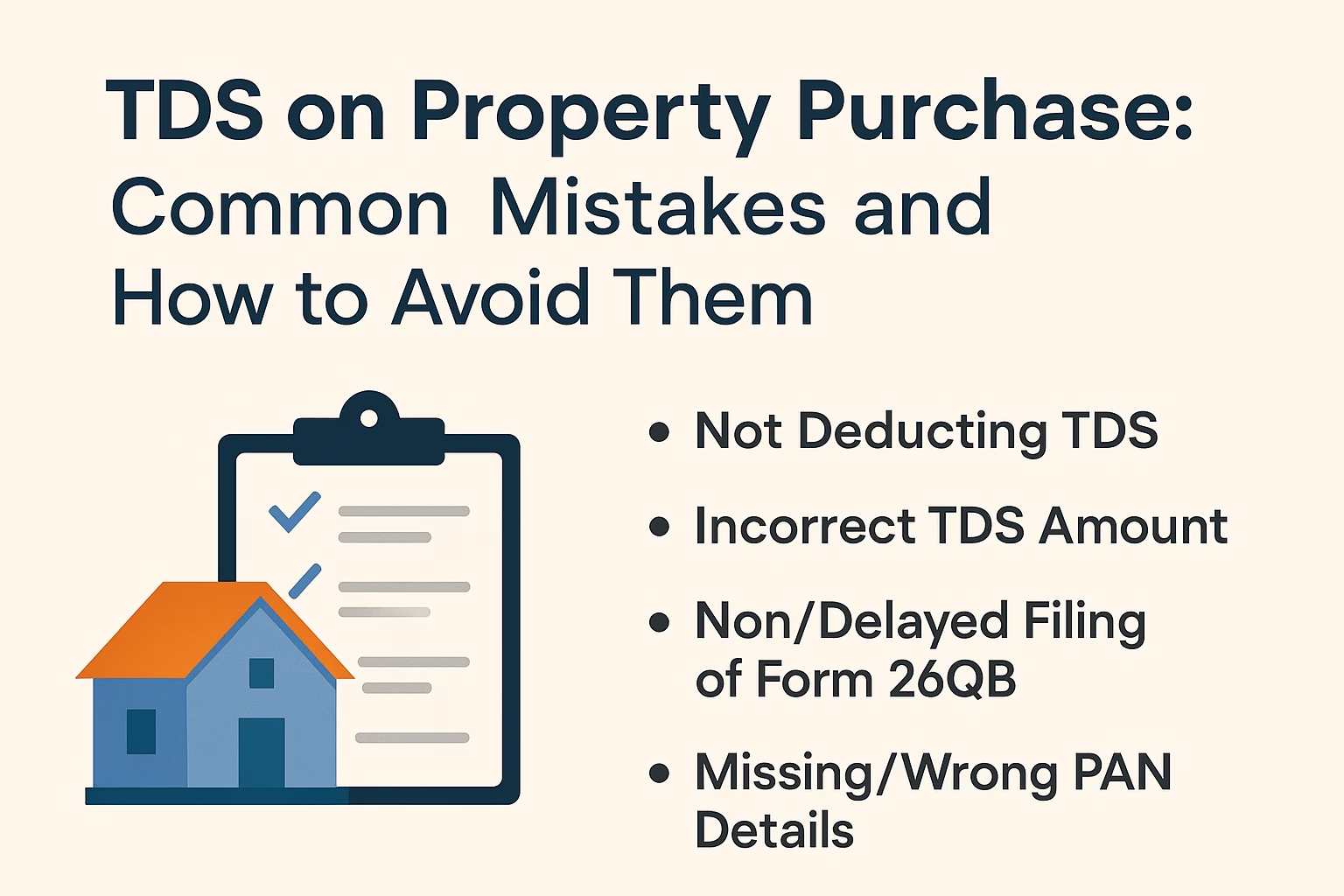
To
The Editor,
Real Estate Times,
[Your City]
Subject: TDS on Property Purchase: Common Mistakes and How to Avoid Them
Dear Sir/Madam,
I am writing this letter to draw attention to a crucial yet frequently misunderstood aspect of real estate transactions — TDS (Tax Deducted at Source) on property purchases under Section 194-IA of the Income Tax Act. While the provision was introduced to ensure tax compliance in real estate dealings, many home buyers either overlook or incorrectly implement it, leading to penalties, legal consequences, and financial stress.
This letter aims to highlight common mistakes buyers make regarding TDS on property purchase and provide clear, actionable solutions to avoid them.
Understanding Section 194-IA: A Quick Refresher
Before addressing the mistakes, let us briefly understand what the law states:
- Who is required to deduct TDS? Any buyer purchasing immovable property (land or building) for ₹50 lakhs or more is liable to deduct 1% TDS on the total consideration.
- When should TDS be deducted? The TDS must be deducted at the time of making payment to the seller, whether partial or full.
- How to pay the TDS? The TDS is to be deposited with the government using Form 26QB within 30 days from the end of the month in which payment is made.
- Form 16B (TDS certificate) should be issued by the buyer to the seller after downloading it from the TRACES portal.
Now, let us explore the common mistakes buyers make in executing this requirement and how to avoid them.
Common Mistake 1: Not Deducting TDS at All
The Error:
One of the most frequent errors is completely ignoring the TDS deduction, especially in cases where:
- The buyer is unaware of the law.
- The seller is an NRI (which requires higher TDS).
- The transaction is between relatives or friends.
How to Avoid:
- Always verify the total consideration amount. If equals or exceeds ₹ 50 lakhs, TDS is mandatory.
- If the property is being purchased from a Non-Resident Indian (NRI), TDS under Section 195 applies at a higher rate (20% or more), not 1%.
- Use government portals like the TIN-NSDL website to educate yourself on legal requirements.
- Consult a tax consultant or lawyer before making payments.
Common Mistake #2: Deducting TDS on Installments But Not Depositing Timely
The Error:
In cases of under-construction properties or payment in phases, buyers deduct TDS but fail to deposit the TDS within 30 days from the end of the month of each payment.
How to Avoid:
- Treat each installment as a separate transaction for TDS purposes.
- Keep calendar or set reminders for due dates.
- Use Form 26QB for every payment made, even for part payments.
- Maintain a log of each payment and corresponding TDS deposited.
Common Mistake #3: Wrong PAN Details or Mismatch
The Error:
Filing Form 26QB with incorrect PAN of the seller or buyer is a serious error that can cause:
- Mismatch in Form 26AS of seller.
- Rejection of TDS credit.
- Penalties and delay in processing.
How to Avoid:
- Double-check PAN details of both buyer and seller from their PAN cards.
- Ensure name and PAN match exactly as per income tax records.
- Don’t rely on verbal communication; verify documents.
Common Mistake #4: Not Filing Form 26QB Separately for Each Buyer-Seller Combination
The Error:
If there are multiple buyers or sellers, a common mistake is filing one single Form 26QB instead of one for each buyer-seller combination.
How to Avoid:
- Understand the rule: Each buyer-seller pair requires a separate Form 26QB.
- Consult a CA or use guided portals like TIN-NSDL to file correctly.
- Avoid clubbing or combining TDS payments for convenience.
Common Mistake #5: Incorrect Calculation of TDS Amount
The Error:
Some buyers calculate 1% TDS on the amount excluding GST, or excluding parking or other charges, which is incorrect.
How to Avoid:
TDS is to be deducted on the entire consideration including:
-
- Basic cost of the property
- Clubhouse fees
- Parking charges
- Electricity deposit
- Other incidental charges
GST is separately charged, TDS is to be calculated excluding GST component, as per CBDT Circular No. 23/2017.
Common Mistake #6: Failure to Issue Form 16B to the Seller
The Error:
After depositing TDS, buyers often do not download or provide Form 16B (TDS certificate) to the seller.
How to Avoid:
- Login to the TRACES portal (https://www.tdscpc.gov.in).
- Download Form 16B after 5–10 days of depositing TDS.
- Hand over or email the TDS certificate to the seller.
Common Mistake #7: Believing Builder Will Handle It All
The Error:
Buyers often assume that the builder will take care of all formalities, including TDS deduction and payment. However, the onus lies solely on the buyer.
How to Avoid:
- Be aware: The Income Tax Department holds the buyer responsible.
- Even if the builder assists, ensure Form 26QB is filed in your name and TDS is paid from your bank account.
Consequences of Non-Compliance
Failure are comply with Section 194-IA can result in:
- Interest @ 1% per month for late deduction.
- Interest @ 1.5% per month for late deposit.
- Penalty of ₹200 per day under Section 234E.
- Notice from the Income Tax Department.
Pro Tips for Smooth Compliance
- Maintain a checklist for all TDS-related tasks.
- Use Form 26AS to cross-check if the TDS appears under the seller’s name.
- File correct details carefully to avoid future litigation.
- Keep are all acknowledgment receipts and TDS certificates your records.
- Consider using portals that assist with Form 26QB preparation or consult a CA.
Conclusion
TDS on property purchase is not merely a formality, but a crucial tax compliance responsibility. Despite its importance, many buyers—especially first-time homebuyers—lack awareness or clarity, leading to costly mistakes. These errors, though common, are entirely avoidable with proper knowledge, attention to detail, and timely action.
